Whether harmonious, strong or mild, spicy, earthy, nutty or chocolaty: Coffee is a matter of taste.
But not only that. From decaffeinated to mild and stomach-friendly to strong espresso, coffee offers a broad spectrum of effects on our well-being.
Where does this diversity and the various preparation methods come from? Organic cultivation, resource-saving processing and a fair price for this product, which is produced with a lot of manual work, are also part of it.
Join us in the world of coffee…

Coffee – the black gold
For most of us, life without coffee is unthinkable. This is reflected in the world production, which amounts to about 8 million tonnes (8’000’000’000 kg!) depending on the harvest. Coffee is one of the most important agricultural products worldwide. The most important coffee-growing regions are Brazil, Vietnam and Colombia, but coffee is also produced in India, Indonesia, East Africa and Central America. Not only the origin and the climate influence the taste of coffee, but also the variety, the processing, the roasting and last but not least the preparation have an impact on the flavour of a cup of coffee.
Coffee is a tropical plant, which in the wild can grow up to 10 metres high, but is cut back to about 2 metres when cultivated. The coffee bush carries small, white, jasmine-scented flowers. After flowering, berry-like fruits ripen, whose colour change from green to yellow and gradually to red during the ripening process. Two half beans or one pearl bean grow inside a coffee cherry. The ripening phases vary from berry to berry. This means that blossoms, unripe fruits and ripe coffee cherries can occur on the same plant. It takes 6 to 11 months from flowering to harvesting the coffee.
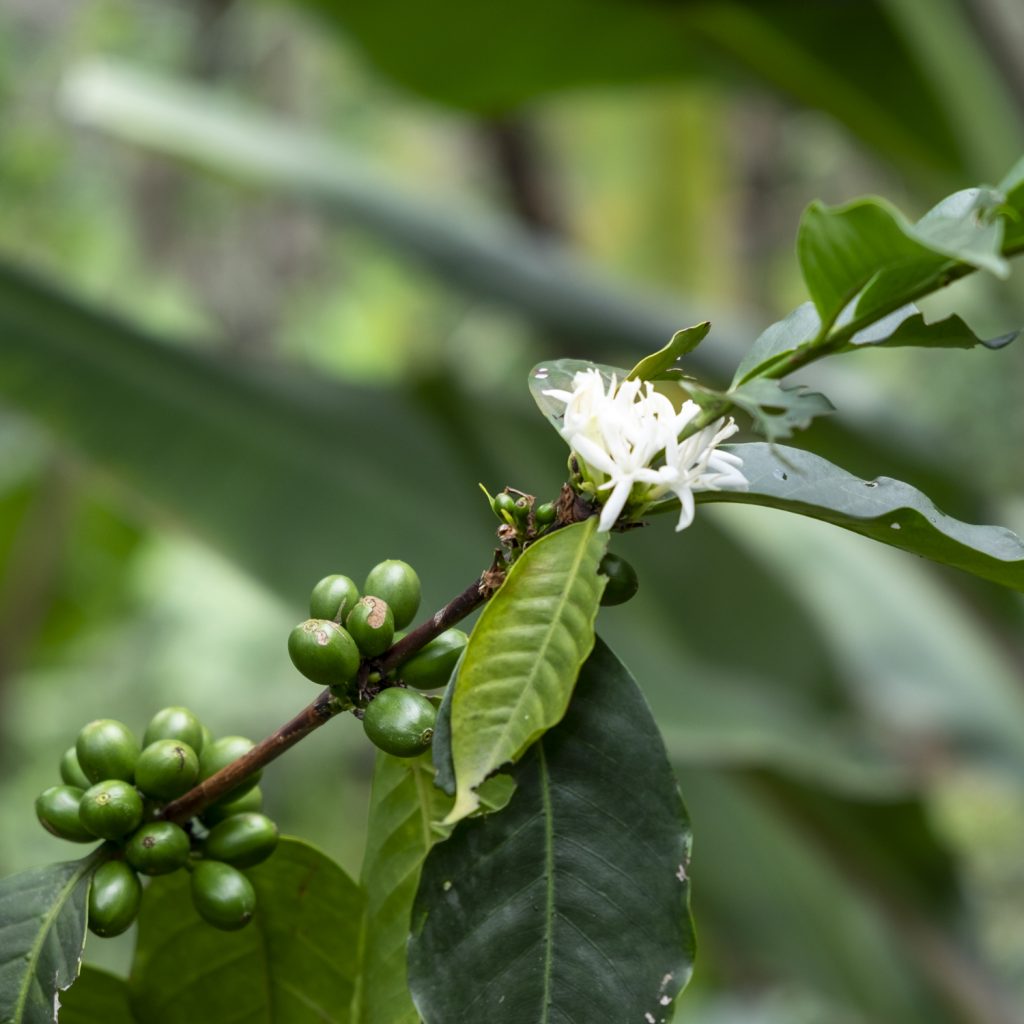

Coffea arabica und Coffea robusta
Two species have become commercially established:
The Robusta bean, scientifically known as Coffea canephora, is, as the name suggests, the more robust plant and contains twice to three times as much caffeine. Its taste is earthy to woody, nutty and more bitter than Arabica. Robusta usually has very little acidity. It is often added to espresso blends because of its full body (body = the feeling of how the coffee is perceived in the mouth).
Arabica is the more sensitive plant and grows up to an altitude of 2000 metres above sea level. Beautiful highland coffees have a flowery acidity, are medium-bodied and aromatic. Because of the smaller harvest, the usually higher quality, greater care and the longer transport routes to the export port, Arabica coffees are considerably more expensive.
Processing
The ripe coffee cherries have a thick layer of sweet, red pulp (cascara), that must be removed to expose the two seeds inside.
In order to avoid natural fermentation as well as rotting of the fruit and in order not to impair the flavour of the coffee beans, the processing is done immediately after harvesting.
There are different methods for this:
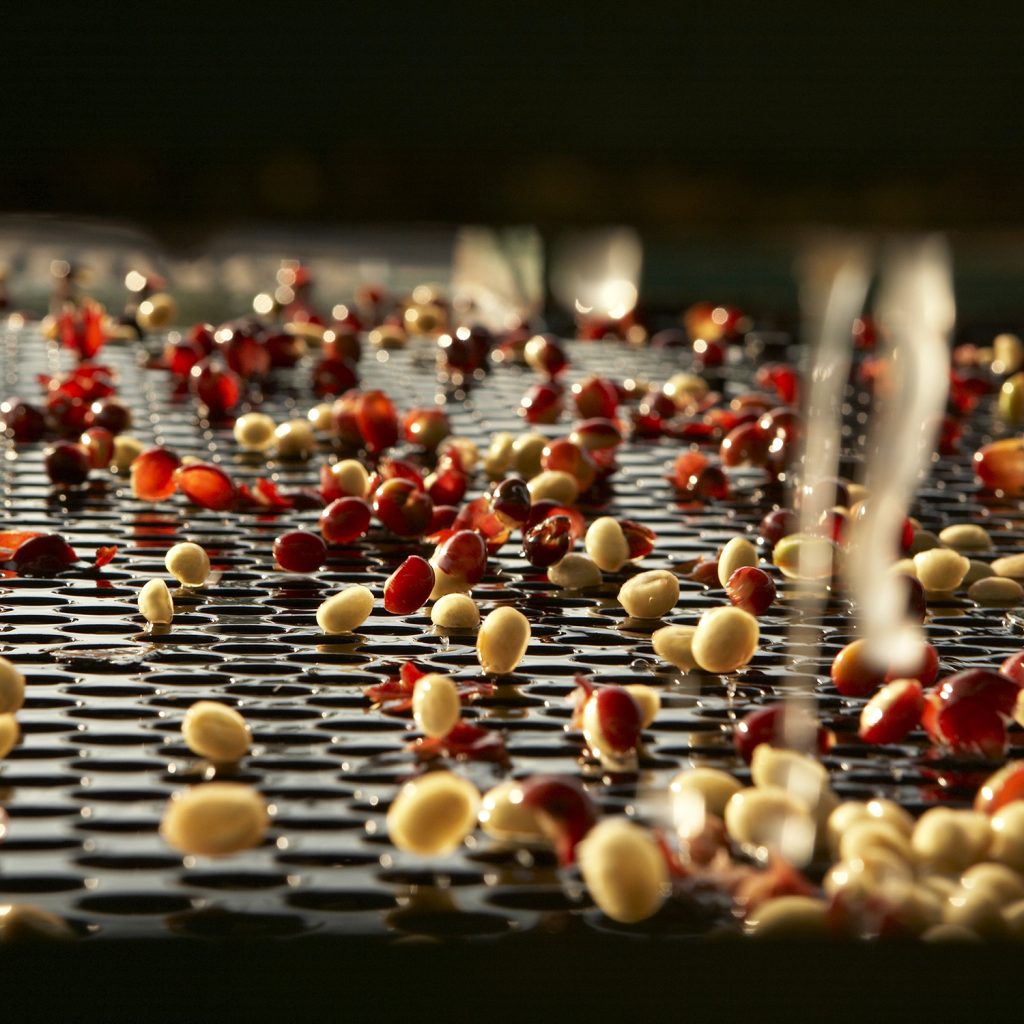
Dry processing
Such processing can be chosen where climatic conditions allow sun drying.
The whole coffee cherry is dried, then separated from the dry pulp, the parchment skin removed, sorted and in some cases also polished.
This coffee is characterised by a aromatic, strong body with a neutral taste.
Wet processing
The requirement for this type of processing is optimally ripe coffee cherries. The flesh of the harvested coffee cherries is scratched without damaging the beans and then soaked in water. The moisture and the pulp cause fermentation, which influences the flavour of the bean. The beans are then separated from the pulp, dried, the parchment skin removed, sorted and in some cases polished.
Due to the fermentation, the wet-processed coffee has a fresh, fruity acidity with a lighter body.
Semi-dry processing
There are also countries that use a combination of both types of processing, also called semi-washed.
The pulp is largely separated by machine, the bean is washed and then dried without fermentation.
This processing method is mainly used in Brazil for higher qualities.
Honey processed method and other processing methods
Recently, new processing methods have also been used. The best known is the “honey process”, in which the coffee cherry is only partially washed. The skin is removed, but the soft, sticky pulp remains attached to the bean and is dried slowly and in a controlled manner. This produces sweet and fruity flavours.
All these types of processing are about giving the bean more flavour naturally.
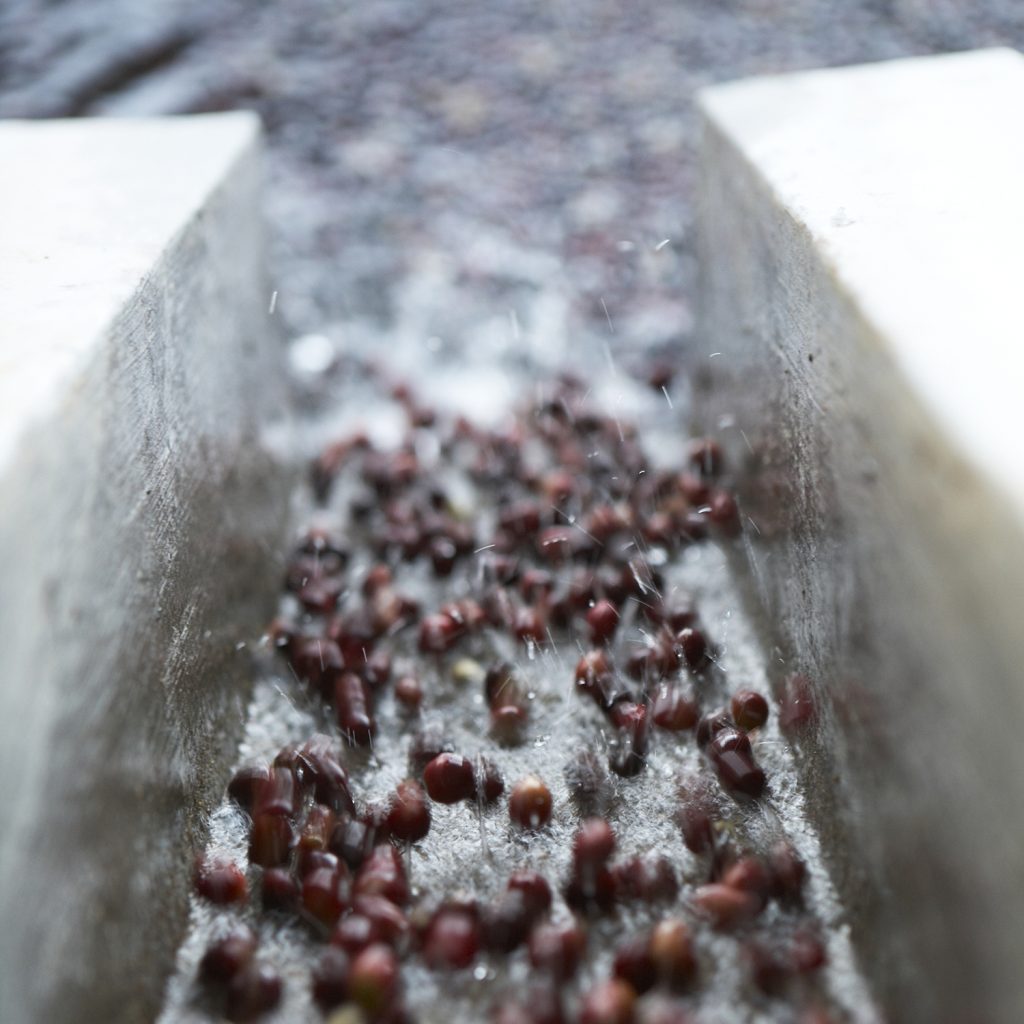
Wet processing
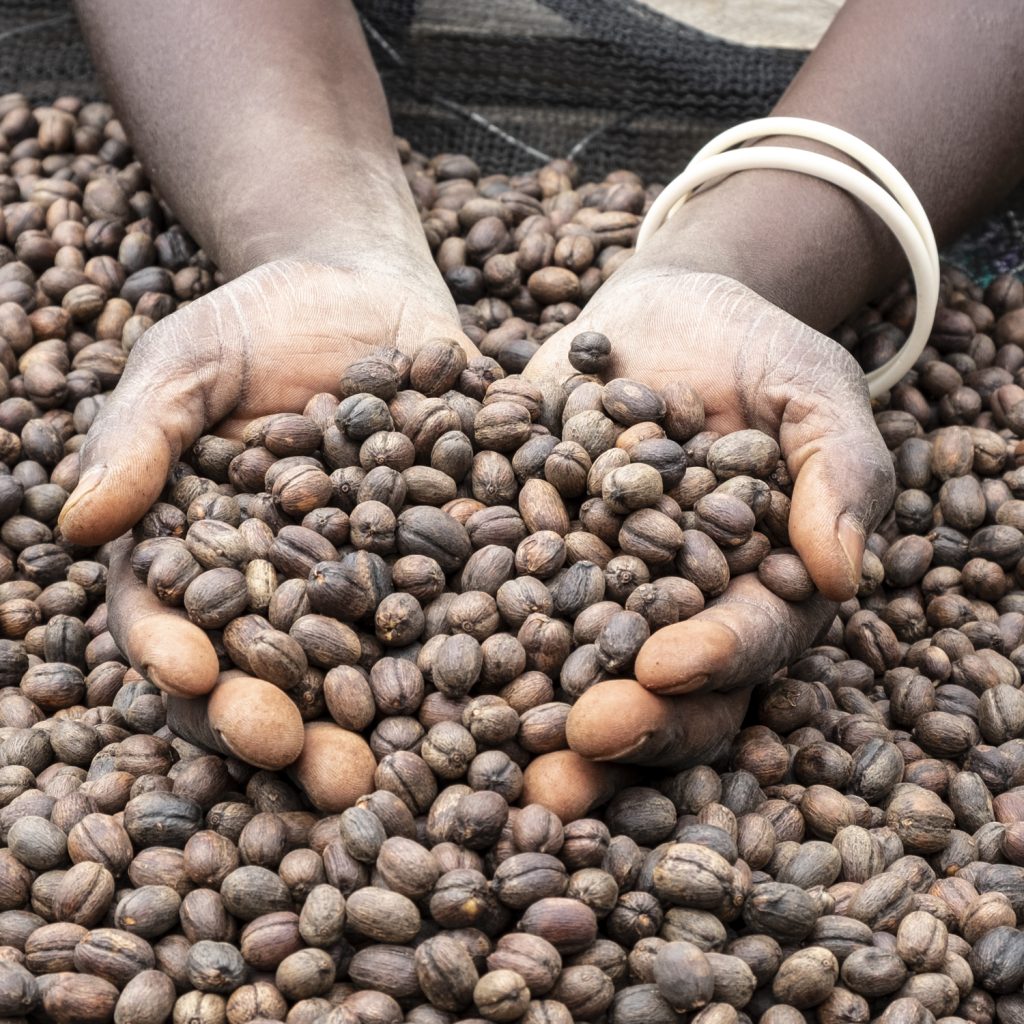
Dry processing
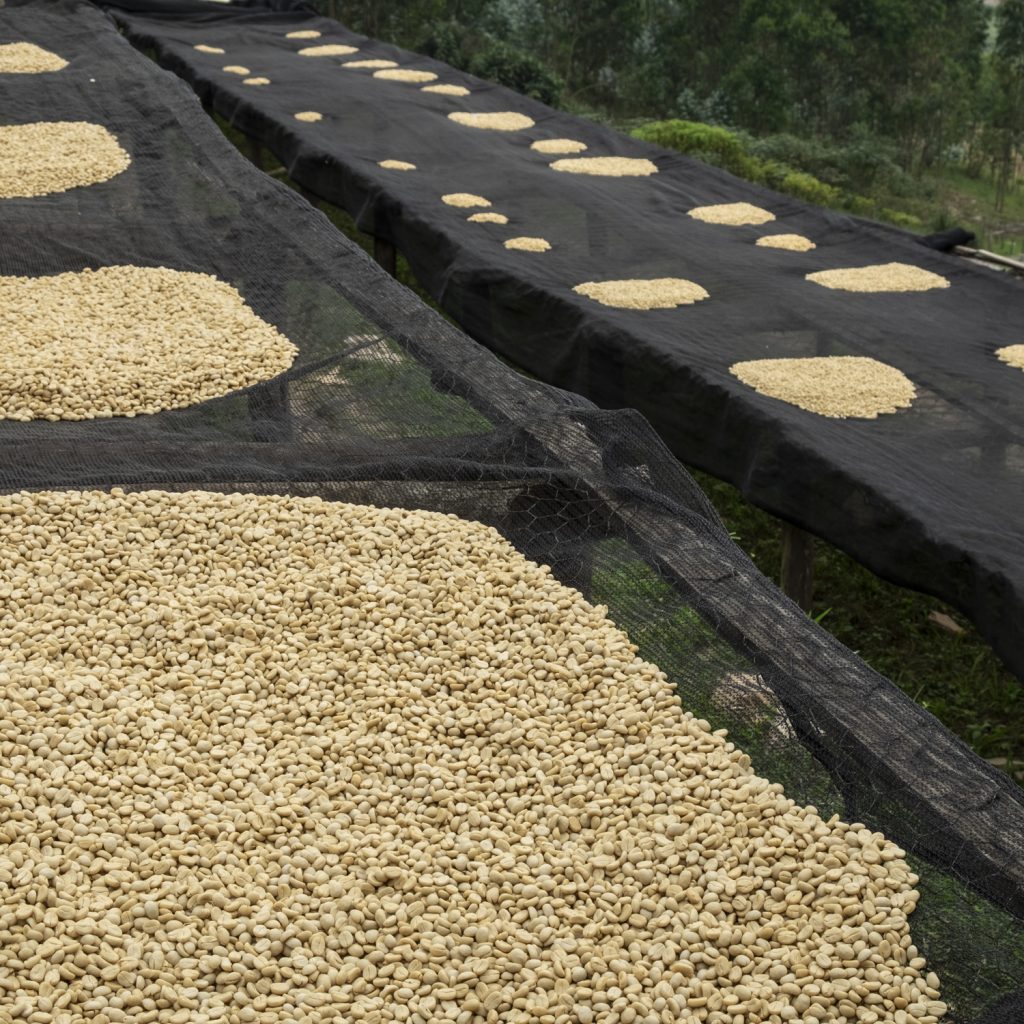
Drying coffee
Decaf coffee
Caffeine is an alkaloid that has a stimulating effect on our nervous system. This is one of the reasons why people drink coffee: It has an invigorating effect and makes us more concentrated. For sensitive people, caffeine can lead to nervousness, increased pulse and insomnia. Since caffeine is known to be water-soluble, it can also be extracted from the green bean.
Three different methods are used for this:
1. The green bean is “washed” with water until the caffeine content, which is between 1 – 4% depending on the bean, is reduced to 0.08 – 0.1%. The quality of the coffee also suffers as a result of the washing.
2. The raw bean is soaked in a solvent-containing lye, which dissolves the caffeine faster than in the first method. The quality is better, but the use of solvent leaves an uneasy feeling.
3. The green beans are washed with liquefied CO2 under pressure of up to 300 bar. When the caffeine has dissolved from the bean, the pressure is reduced again to 1. The CO2 becomes gaseous again and can be reused. The caffeine is extracted and separated. This method is complex and expensive, but the quality is comparable to conventional caffeinated coffee.
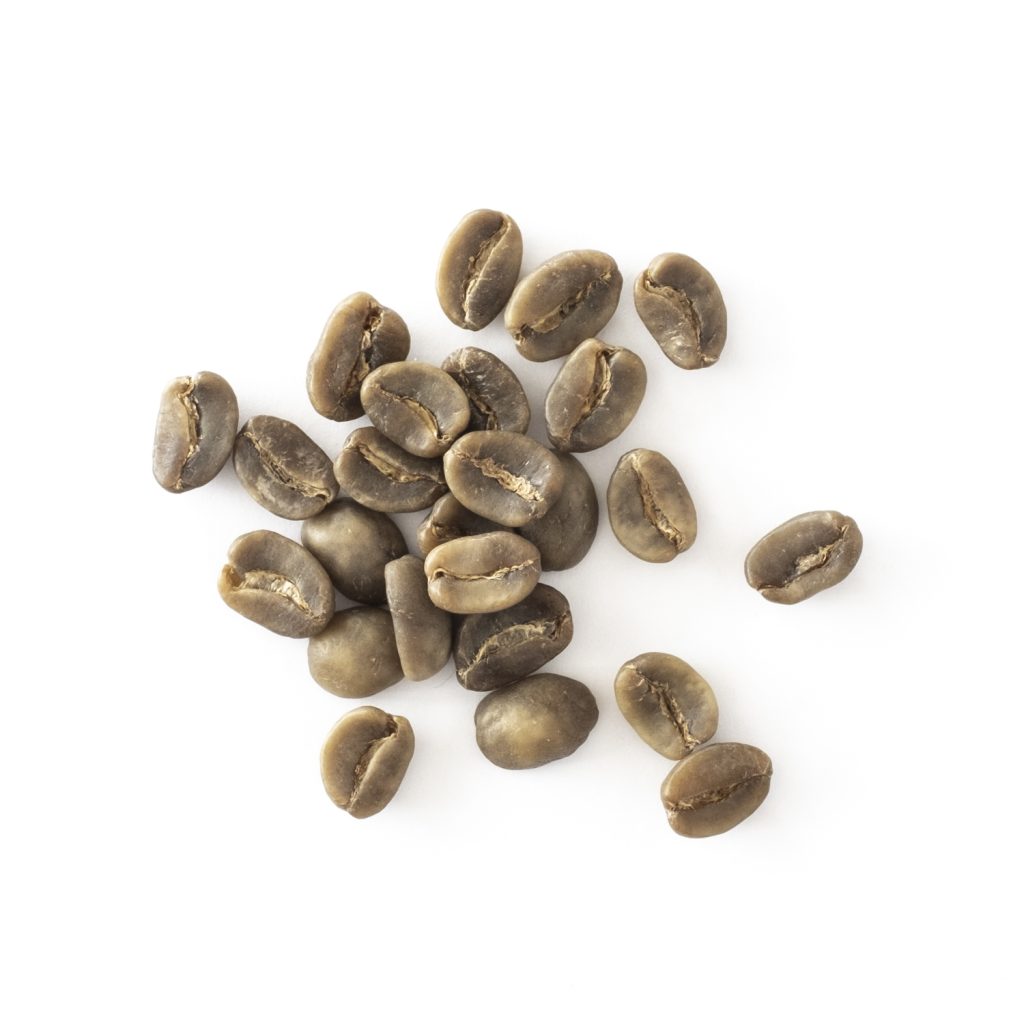
Raw decaf coffee

Roasted decaf coffee
Roasting
Coffee roasting is a craft in itself and is usually done just before consumption. The green coffee bean is roasted from light to dark brown with the help of heat without the addition of fat or water. Depending on the degree of roasting, approx. 800-1000 aromatic substances are created in the process, giving the coffee its unique flavour. The roasting time and temperature in the various roasting phases also influence the flavour of the coffee.

Raw coffee beans

Roasted coffee beans
Our lightest roast is the Züri Kafi, our mildest coffee of the range. Our darkest roast is the Italian roast, which we roast until we hear the second crack. Then the bean starts to “sweat”, i.e. small droplets of oil emerge. This makes for a perfect coffee for espresso drinks. In between, you will find various medium and medium-strong roasts, which are available as single origin coffee or as blends.
Since freshly roasted coffee is the most aromatic, we roast two to three times a week. A roasting batch takes about 15 to 17 minutes. By roasting slowly, we give the coffee the time it needs to develop its incomparable taste. The maximum quantity of a batch is 25 kg.
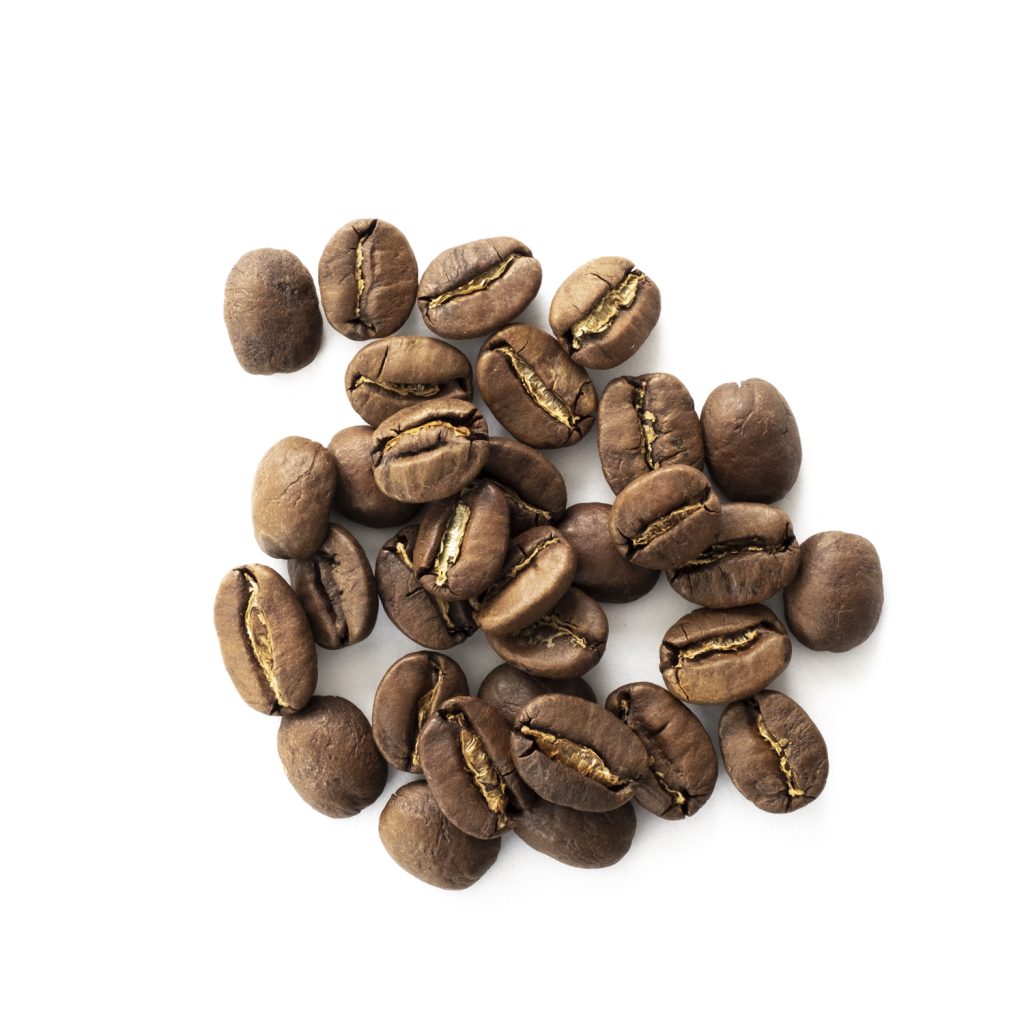
Light roasting
Züri Kafi
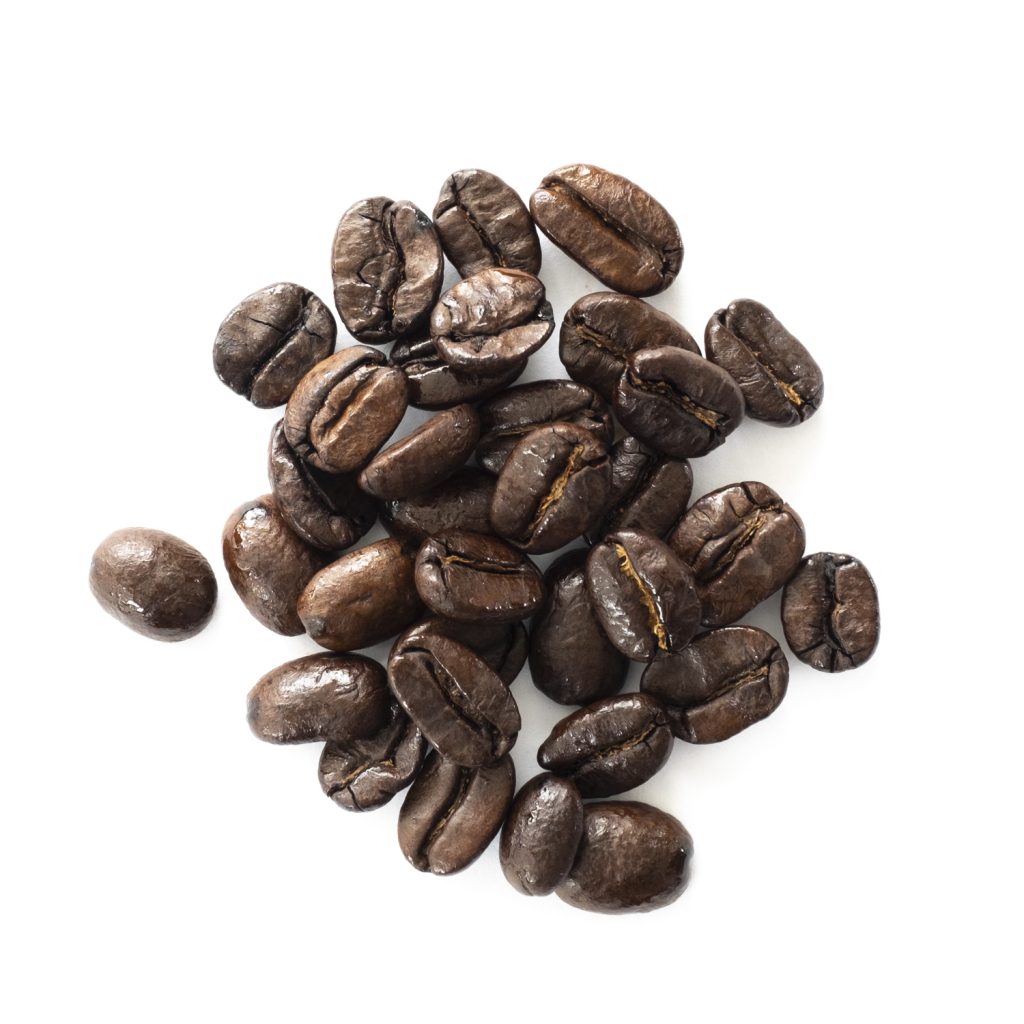
Dark roasting
Italian blend
Coffee blends versus single origin
Roasted coffee is available either in blends or as single origin coffee. Comparable to choir musicians and soloists, individual coffees show their qualities above all in combination with others. However, there are coffees, virtuoso soloists, which want to present their uniqueness, their special nuances of taste, their particularity as pure single origin.

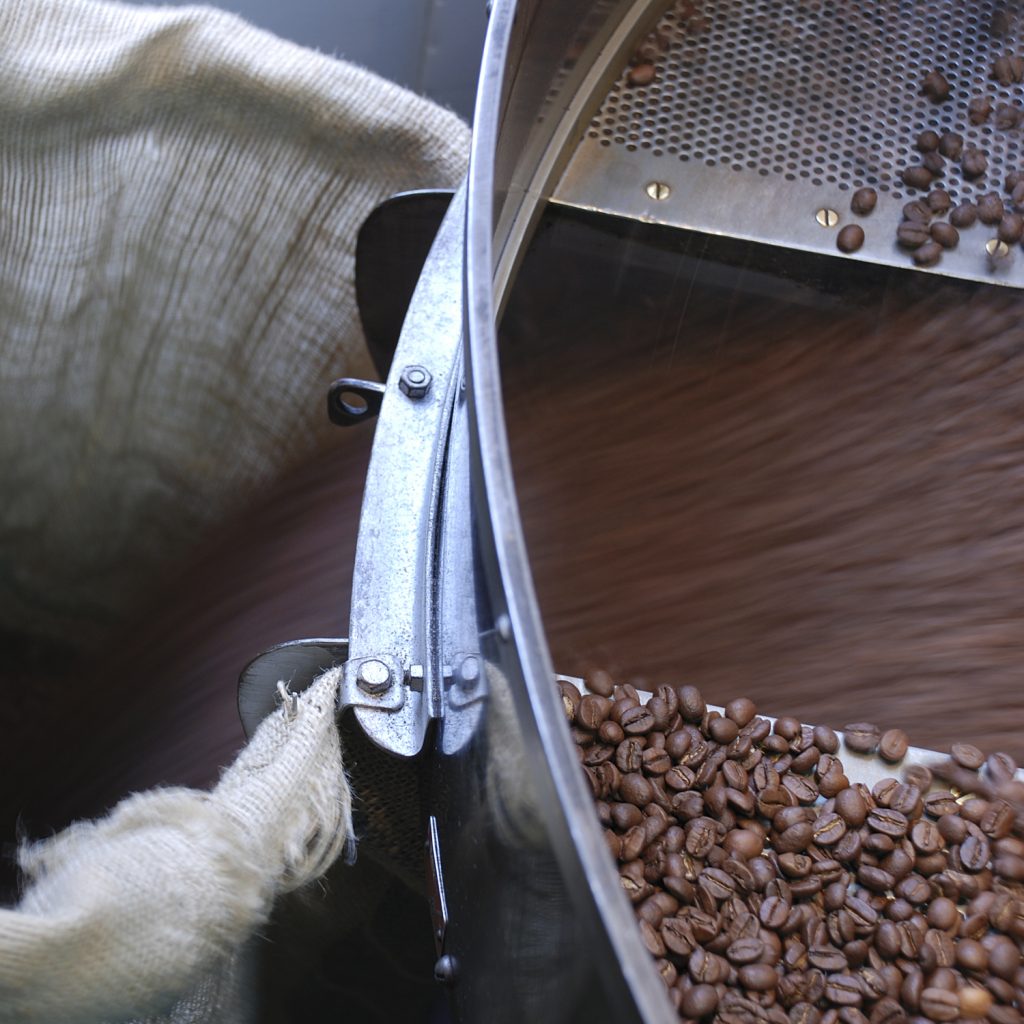

Storage
Roasted coffee can be stored unvacuumed for about 4 weeks and should be kept as flavour-proof as possible. Ground coffee loses its quality after only a few days. For longer storage, you can freeze the coffee (whole or ground).
If you have the possibility, grind the coffee shortly before use. An optimal grind is a prerequisite for a good cup of coffee. We will be happy to advise you.
Preparation
For a perfect cup of coffee, a number of things need to be taken into consideration:
Grinding
The fresher you grind the coffee, preferably immediately before brewing, the better and more aromatic it will be. The degree of grind varies depending on the type of preparation: from the finest grind for a Turkish-prepared coffee to a coarse-ground, cold-infused so-called “cold-brew”. To find the ideal grading, you can orientate yourself on the extraction time (= throughput time). This is measured from the addition of water to the ground coffee to the desired amount of coffee in the cup. The following table gives a brief overview:
| Piston machine | approx. 25 seconds | fine grinding |
| Filter | approx. 2 Minutes | medium-fine grinding |
| Perculator (Bialetti) | approx. 2 Minutes | medium grinding |
| French-press | approx. 4 Minutes | medium coarse grinding |
A wrong grind has the following consequence:
If the grind is too coarse, the coffee becomes watery and acidic; if the grind is too fine, it becomes bitter.
The right grinder
There are countless coffee grinders in all sizes and price ranges. Fundamentally, a distinction can be made between grinders with cone and disc grinders.
For piston preparation, we recommend a disc grinder, as these can generally grind finer and more homogeneously.
For all other preparations, you can also use a cheaper cone grinder. Whether electrically or manually operated is up to your preference.
Dosage
As a basic rule for the dosage of coffee: 8 to 9 g (approx. 1 heaped tablespoonful) of coffee powder is enough for one cup, for ½ l you need 25 g of coffee.
Water
Fresh water is a must for good coffee. Calcareous water has a negative effect on the aroma. Calciferous water should be filtered, which also protects your coffee machine. The temperature of the water also plays a decisive role. The optimum temperature is 90 to 95°C. Water that is too hot makes the coffee bitter, water that is too cool does not extract the aroma optimally and acids dominate the taste.
Tableware
Finally, you should also pay attention to the choice of tableware. Cups that are too thin cause the coffee to get cold too quickly. Somewhat thicker (not too thick) porcelain keeps the heat better.
Serving
Coffee can be served in a variety of ways. Here we briefly present some common coffee specialities:
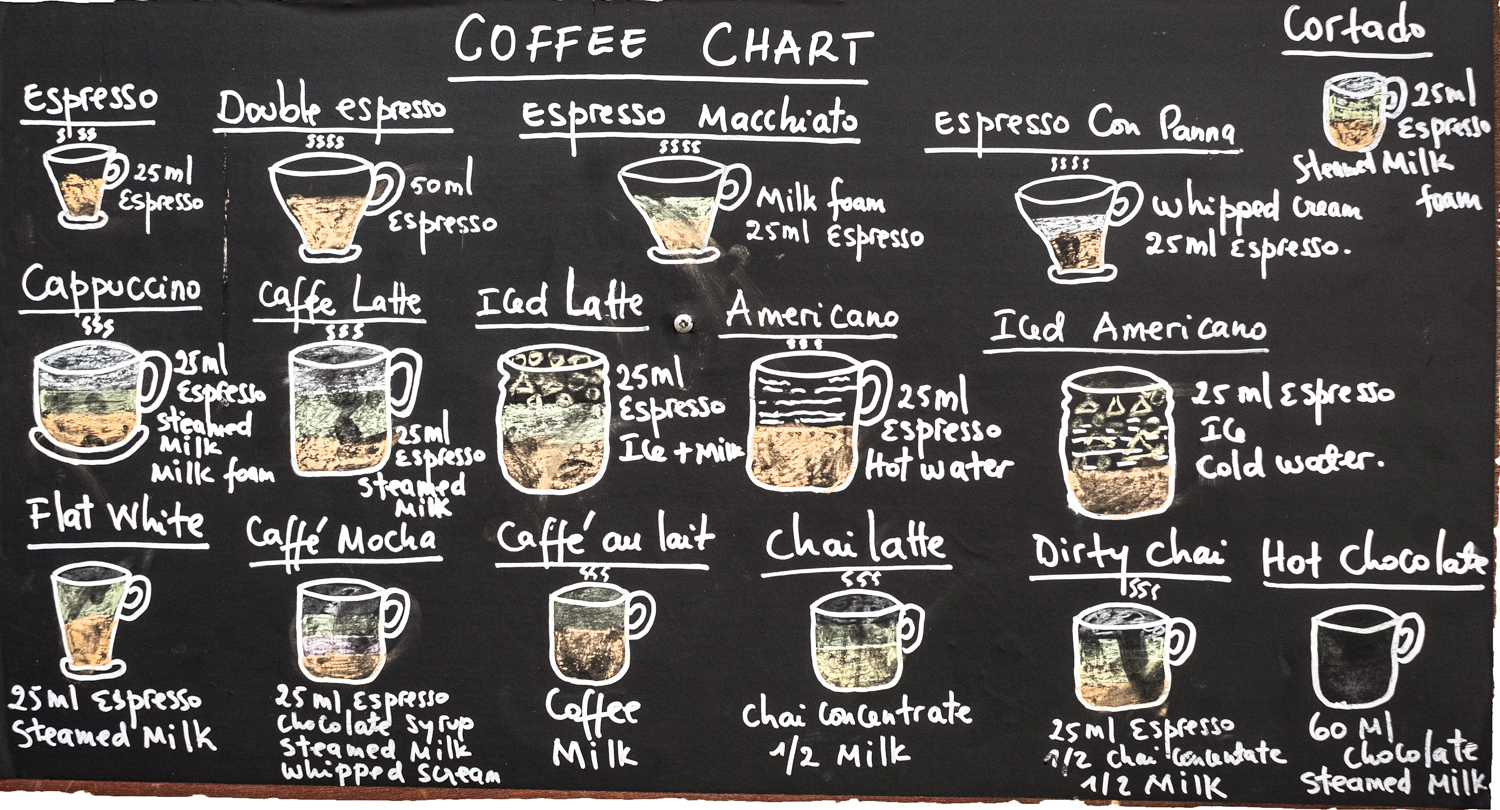
Kaffee klassisch – Classic coffee
The most common and popular preparation in everyday life is the classic brewed coffee. As black coffee or combined with sugar and/or milk or coffee cream, it’s hard to imagine everyday office life without it.
Schale – Coffee with milk
The coffee is mixed 1:1 with hot milk.
Espresso
This coffee, served in small cups, is particularly strong and is consumed black, sweetened with a little sugar according to taste.
Cappuccino
Here, an espresso is prepared in a large cup and filled with hot foamed milk.
Latte Macchiato
The “latte macchiato”, usually served in a tall glass, consists of 1/3 espresso, 1/3 milk and 1/3 milk foam. The milk is foamed and poured into the glass. Then the espresso is prepared and slowly poured in. Due to the different consistency, the espresso flows through the milk foam and remains on top of the warm milk.
Turkish coffee or Mocca
This specialty from the Arab region is traditionally prepared in small pots. The very finely ground coffee is poured over with warm water and boiled twice. The coffee is sipped at the top and the grounds remain at the bottom of the cup.
Eiskaffee – Iced coffee
A wonderful refreshment in summer is the iced coffee, which is served from cooled coffee with milk and ice. It is often garnished with whipped cream and cocoa powder.
Kaffee mit Schuss – Coffee with a shot
Whether with rum, whiskey, grain, brandy or liqueur. Here, alcohol is added to the coffee.
Flavoured Coffee
With flavored coffee beverages, the coffee is usually refined with various syrups (caramel, vanilla, chocolate, etc.) shortly before serving. The coffee bean can also be flavored before preparation. We use natural flavouring oils for this preparation.
Flat White
Like the cappuccino, the Flat White is prepared in a large cup. Unlike the cappuccino, it is served with a double ristretto or a double espresso and the milk foam is more fine-pored and liquid. The milk foam ends at the edge of the cup, hence the name “flat white”.
Americano
Since Americans found Italian espresso too strong, they simply extended it with water.